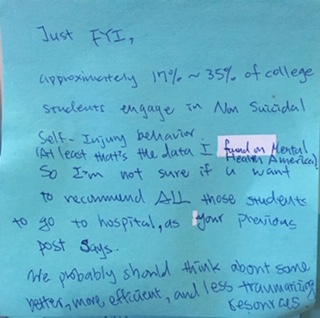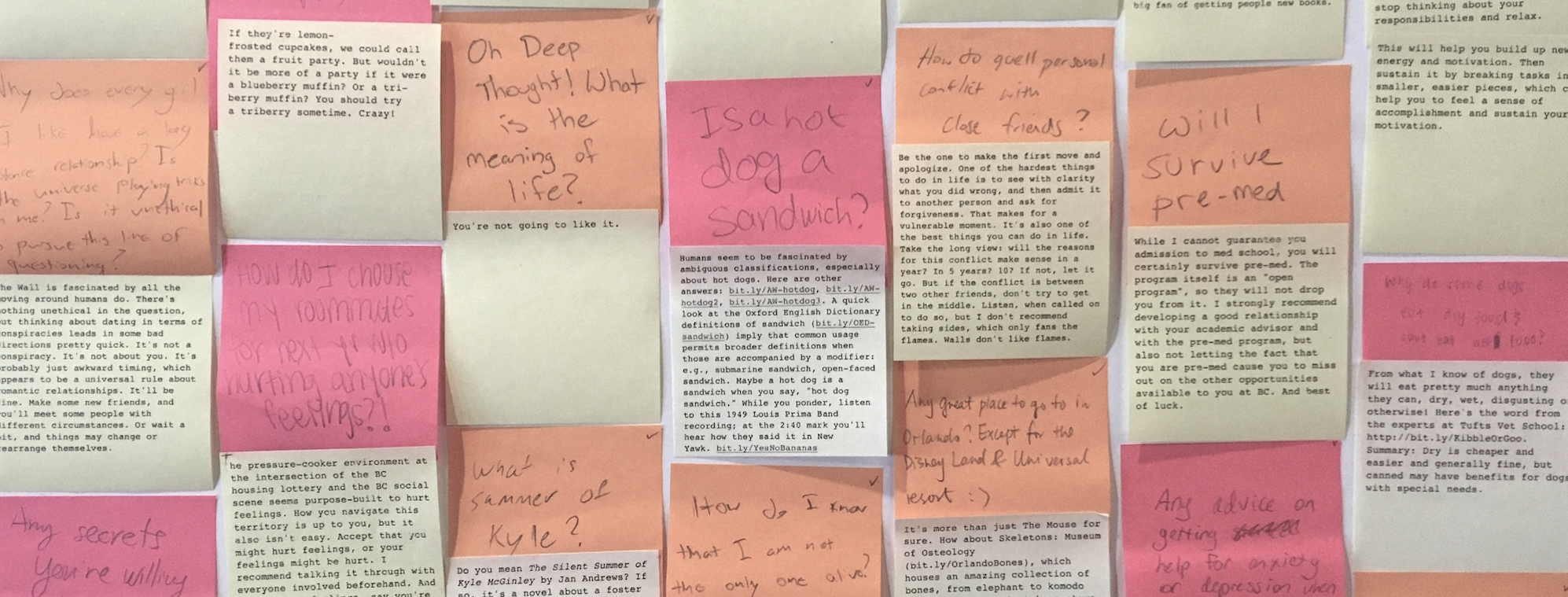
It sounds from other responses as if the Dean’s office would be interested in hearing what you have to say about less traumatizing options. Please reach out to them. This wall (and librarians who help answer it) are not equipped to give medical or medical policy advice. However, library staff *are* equipped to evaluate sources. If you click through to the sources for those figures, you’ll find that the lower % was established by a non-random internet survey, and asked about lifetime harm; it is both a low standard for evidence, and not necessarily about behavior during college years. The higher % was a very small sample (159) of a wide range of ages in UG classes at U. Mass Boston, and was intended as an instrument validation study for the Deliberate Self Harm Inventory (DSHI). Researchers caution that the results should not be used to estimate population prevalence for self-harm behaviors. If you are interested in further uses of the DSHI, I recommend searching for it in the PsycInfo database and selecting “test and measure” in the search drop-down menu.

